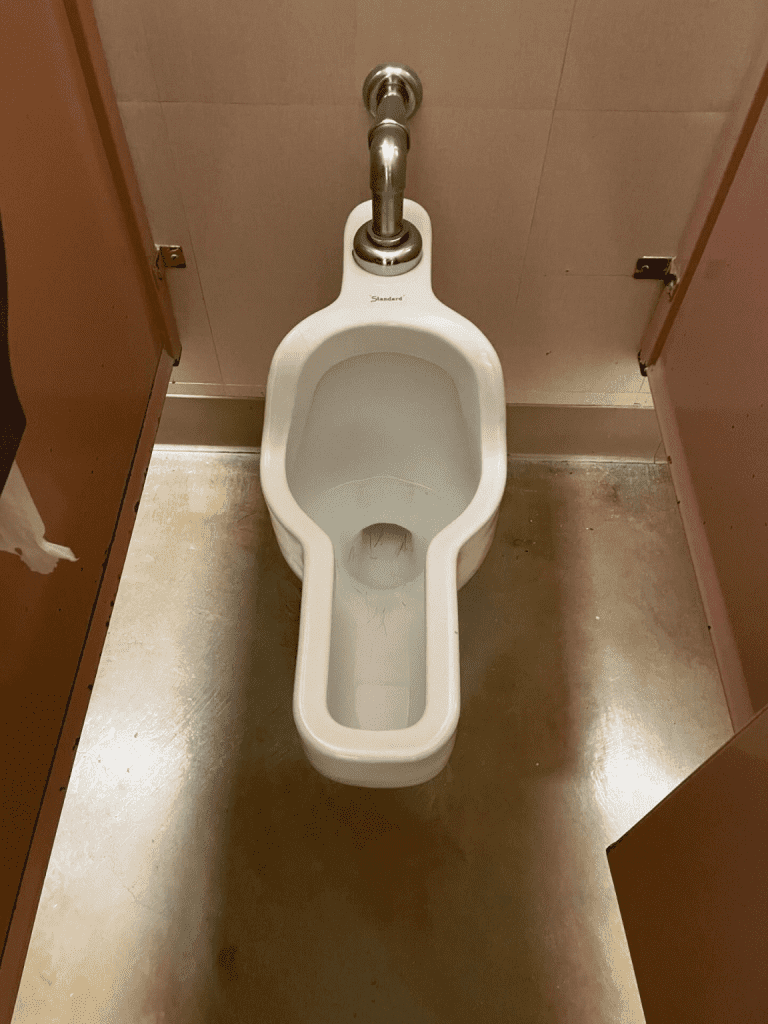Public restrooms have evolved over the years to adapt to the needs of cleanliness, efficiency, and user comfort. But sometimes, we come across restroom fixtures that seem out of the ordinary and leave us wondering about their purpose. One such fixture caught the attention of many—a unique, unfamiliar toilet shape spotted in the women’s restroom at the Huntsville Space Center. So, what exactly is this peculiar design, and why does it exist? The answer lies in a practical innovation: the women’s urinal.

What is a Women’s Urinal? Understanding the Purpose
A women’s urinal is designed to allow women to urinate from a standing or slightly crouched position. It provides an option that doesn’t require sitting on a public toilet seat, which many find uncomfortable or unsanitary. This specific design is intended to cater to the needs of women who wish to avoid direct contact with shared restroom surfaces and improve the hygiene experience in public facilities.
The Origins of Women’s Urinals: Where Did the Concept Begin?
The concept of women’s urinals is not entirely new. These designs have been implemented in various parts of the world, including European countries, where they’re more commonly found in high-traffic public spaces. They were originally designed to promote faster restroom use while reducing contact with potentially unsanitary surfaces.
How Does the Unique Shape Work? Practical Use of Women’s Urinals
Unlike traditional toilets, which require sitting, the women’s urinal is designed to be used in a standing or semi-standing position, allowing women to avoid touching the seat entirely. Here’s a quick breakdown of how it functions:
- Positioning and Comfort: The shape of the urinal is intended to guide users to stand at a specific angle, making it easy to use while avoiding spills or discomfort.
- Hands-Free Solution: These urinals often encourage a hands-free approach to maintain cleanliness and reduce the need for handwashing after every use.
- Efficiency and Hygiene: By avoiding direct contact, the urinal minimizes germ transmission, offering a cleaner option, especially in busy restrooms.
The Benefits of Women’s Urinals: Cleanliness, Convenience, and Quick Use
There are several advantages that women’s urinals bring to public restroom design, especially in high-traffic areas like the Huntsville Space Center:
- Enhanced Cleanliness: Reducing contact with shared surfaces is a huge benefit for many restroom users. Women’s urinals allow for a sanitary experience with minimal contact.
- Reduced Waiting Times: These urinals are faster to use, which is helpful in high-demand locations, cutting down waiting times in women’s restrooms.
- Environmental Benefits: Some women’s urinals are water-efficient, using less water than traditional toilets, making them a sustainable choice for eco-conscious facilities.
Addressing the Learning Curve: Adapting to an Unfamiliar Fixture
For those unfamiliar with this fixture, it may seem puzzling at first. Many women may be unsure of how to use it correctly or feel hesitant to try. The learning curve associated with women’s urinals is natural, as traditional restroom setups have remained mostly unchanged for decades. Facilities that install such fixtures often include usage instructions to help first-time users get comfortable with the process. Clear instructions on use can demystify the fixture, allowing more people to take advantage of its benefits.

Why Public Places Like the Huntsville Space Center Install Women’s Urinals
Busy public locations like the Huntsville Space Center, which see thousands of visitors daily, are ideal settings for innovative restroom solutions. Given the high volume of foot traffic, women’s urinals help maintain clean, efficient restroom use, reducing the demand on traditional toilets. Furthermore, by implementing such practical solutions, places like the Huntsville Space Center can improve visitor experience, aligning with modern needs for both hygiene and efficiency.
Breaking the Stigma: Normalizing Women’s Urinals in Public Spaces
While women’s urinals may be unfamiliar, they’re an important addition to restroom design that addresses both comfort and hygiene. Public acceptance of these fixtures can help break down the stigma surrounding their use. As more people encounter these fixtures and learn about their benefits, women’s urinals may become a more common feature in public facilities.

The Future of Public Restrooms: Moving Towards Inclusive and Practical Design
Women’s urinals represent just one way public restroom design is evolving. As hygiene and comfort become more significant in shared spaces, we’ll likely see more innovative restroom fixtures addressing diverse user needs. Facilities worldwide are investing in unique, practical designs that prioritize cleanliness, efficiency, and user comfort, reflecting a more inclusive and forward-thinking approach to public restrooms.
Conclusion
The unique toilet shape spotted in the Huntsville Space Center’s women’s restroom is indeed a women’s urinal, designed to encourage standing use without the need to sit on a shared surface. This innovation showcases a shift towards more hygienic and efficient public restroom solutions, particularly in busy environments. As these practical fixtures become more commonplace, they reflect a growing awareness of public health and comfort, shaping the future of restroom design. The next time you encounter an unusual restroom fixture, take a moment to appreciate the thought and purpose behind these modern advancements in public convenience!



